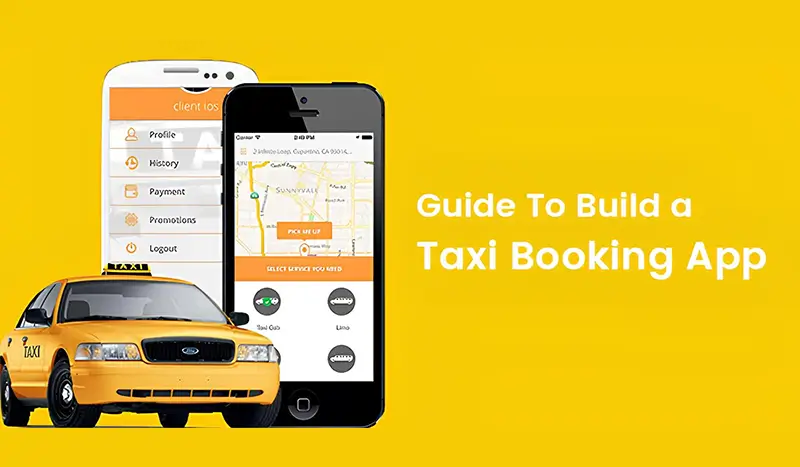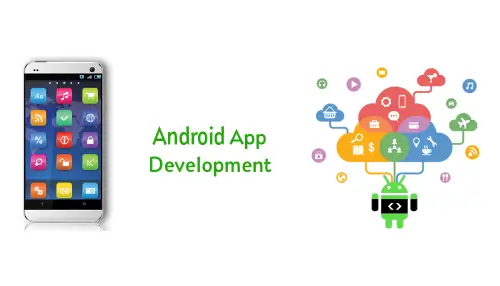The rapid growth of mobile app technology has shrunk down many of our daily tasks depending on smartphones. Whether there is a need to book a cab or it is about getting a hotel room or you need to book a table in any restaurant prior to your visit, there is an app for every possible requirement today. Among all these applications, taxi booking apps are becoming more popular because of the increased demand from users. Today we discuss how to build a Taxi Booking App.
The popularity of taxi booking app development is on the increase to cater to the ongoing demand. The idea about the popularity of this taxi booking app development can easily be drawn to the fact that all these taxi booking app development techniques are making their presence count in the industry. There are taxi booking apps that have emerged as leading business giants in the global market. For instance, Uber started as a taxi booking app has expanded itself to multiple domains including technology and food delivery.
Different Interfaces Of A Taxi Booking App
-
Customer Panel
-
Driver Panel
-
Admin Panel
-
Design
-
Backend Development
-
API Integration
-
Testing
-
Launch
The features and elements of the customer panel are integrated considering the needs and expectations of the customers. It will include a registration & login page for entering into the application, ride-booking UI, booking history, payment portal, and reviews and ratings for the drivers.
The driver panel in the application will focus on the operations of a taxi driver using the application. It will include login and registration pages where they can fill in their details to log into the application. It will include a homepage that would have a map in the background. Whenever there is a ride request from the customer, a popup shows up to which they can respond by confirming or denying the ride. After completing the ride, the driver can give the confirmation of payment processed by the customers. Moreover, there are many other features that exist in the driver panel i.e. ride management and payment collection wallet.
Admin panel and driver panel can be combined by any taxi booking app development as per their requirements. However, when developed separately, the main objective of the taxi booking app is to streamline business operations. A CRM can be integrated into the admin panel for administering most of the information at a smooth and fast pace of delivery.
Before we get into creating the real structure of the application, we need to design the application prior to development. It will help the clients and the taxi booking company to visualize what their real application would look like. App designers comprehend the needs of the client and frame them into the design.
An interactive UI is the face of a rich-featured taxi booking application. Missing out the user expectations or client needs may lead to skipping major UI components. When you are planning to create a sustainable application, it is considered a good practice to overlook elements of an appealing app UI initially.
The simplest definition to explain the backend is, it is the BTS of a mobile application. It integrates the functionalities of your mobile application with the database. A backend is a centralized tool that packages your taxi booking application with the server, middleware, and database.
In the earlier section, we discussed the technology stack. In the application part, technologies like Java, Python, Go, and Swift is used to creating the backend of your taxi booking application depending upon the platform you want to develop the application for. RIBs or routers, interactors, and builders are used to streamline the business logic to the backend in native taxi booking apps built across Android and iOS platforms.
API complements the backend of an application. It provides your users with a direct medium to integrate and interact with different functionalities framed in the architecture of the application. From using Google Maps Android APIs in geolocation features, Twilio API in the notification, and Google Pay API for payment integration, API integration has a large role to play in the development of a fully-fledged taxi booking application.
After the formation of its structure, a taxi booking application needs to be tested over a number of parameters that have a crucial role to play in its functioning. Quality analysts create test cases and check the functionality, usability, efficiency, and effectiveness of the taxi booking application. The ultimate is to make the application pass the user acceptance test that analyzes the real-time functioning of the application.
After crossing the testing stage, the taxi booking app is considered ready to deliver to the clients. The application can be launched by the clients through third-party app distribution platforms like App Store or Google Play. Also, it can be launched through newsletters or social media platforms.
Taxi Booking App Must-Have Features
Features play a crucial role in the success of any mobile application. Taxi booking app development is 20% about the process and 80% about the features. Every single taxi booking app might have most of its features function the same as any other such app in the market. So, the challenge is to make yourself stand out despite the similarities with your contenders. However, it is not always about adding new things but also about implementing the older or foundational features rightly.
-
Registration
-
Exact Pickup & Drop Location
-
Distance, Duration & Fare Calculator
-
Push Notifications
-
Tracking
-
Multilingual
-
Payment Integration
-
Booking History
-
Reviews & Ratings
Account creation is a common feature that you might see in many taxi booking applications. It is significant to engage in a rich user experience through the signup page of your application. It is the first page to which your app users would interact with and it needs to be lightweight, responsive, and easy. Utilizing social media integration or OTP-based registration are the simplest ways you can get your users registered on your application. However, you can keep the manual registration as an option therein as well.
Your application can use the device GPS to fetch your current location. It can enable the application to provide drivers with the exact parameters of your location. It escapes the manual insertion of your location. However, there might be accuracy issues at times with maps so it is always to keep the manual insertion of data in the pickup location field available. Users can also simply pin their pickup location on the map. Drop location can be either pinned or added manually by the users. There are voice assistants used to enable entering data through voice inputs in the application which again simplifies the job of textual insertion of data.
Once you have entered your location, the app system estimates the distance, trip duration, and fare. It provides all this information on the screen of the customer’s device. If the customer is fine with the fare, they can further validate the trip by tapping the confirmation button. The system searches for drivers in nearby locations. A popup opens up on the screen of the driver to which they can respond if available for a trip. After receiving the confirmation from the driver, users are provided with an OTP for confirmation when the trip initiates.
Push notifications are a crucial feature that simplifies the availability of information. The app system utilizes push notifications to update users on the latest deals and offers, trip details, and other important information entities. Both customers and drivers can leverage single-click confirmation on the taxi booking application with push notifications. Such a feature makes a taxi application’s interface more simplistic, easy to use, and fast.
Since a large part of the process that a taxi application follows is physical in real-time, there is a significant need for efficient tracking features that provides the customers’ information about waiting for the time for their taxi and the total time it may take to reach their destination. Moreover, the tracking phenomena can be utilized to engage in compatible handling of data over complications.
By making a multilingual application, you make your application outreach a larger audience that might prefer using a taxi booking application in their native language. It also showcases how versatile your application is. Such a feature can play a crucial role in building a defining relationship between native language speakers and your application which can bring business through your application in the long run.
Initially, the taxi booking application would accept cash payments. As time went by, the integration of UPI payments and digital wallets came into use at larger levels. Developers have integrated simplistic payment APIs to indulge in easy and fast payment through different modes. Payment integration needs to be flexible and full of options so it does not create detrimental impacts on the overall user experience of the application.
To keep the track of all the recent trips that were accomplished or failed, developers can use data trackers to provide users with a centralized space where they can get all this information in a readable format. Even drivers can view all of their trips and collection from their interface. Such an approach provides a managed and systematic collection and viewing of data stored in the application.
To analyze the experiences of both customers and drivers, a taxi app development company can include options to allow the app users to add respective reviews and ratings after a ride is finished. These reviews and ratings help the operating company to judge the overall performance of the application. It can be a significant medium to hear the feedback of commuters or even drivers.
It is significant for a Taxi Booking App Development Company to ensure including all the discussed features to engage in maximum efficiency of the application. These features can be the prime identity of an application so it is not to compromise on implementing either of them.
In Conclusion
Now that we conclude this blog, I hope you could comprehend all of your queries on taxi booking app development. For a better understanding, you can review our case study page on Taxi Booking App. Once you have decided to tread on the path to becoming the next Uber or surpassing them, you can Contact Us!







